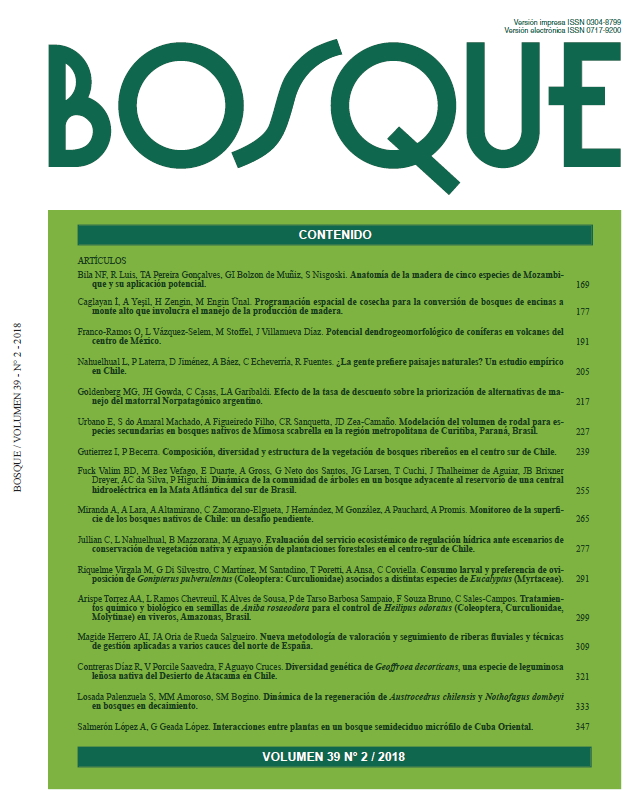Larval consumption and oviposition preference of Gonipterus pulverulentus (Coleoptera: Curculionidae) among different species of Eucalyptus (Myrtaceae)
Main Article Content
Abstract
Eucalyptus trees are among the most important forest resources in Argentina. The weevils of the genus Gonipterus are specialist insects that feed on their leaves. The objectives of this work were to estimate larval consumption and to evaluate the oviposition preference of G. pulverulentus among different species of Eucalyptus. Developmental time, consumption, final weight and some nutritional indexes were evaluated from cohorts of larvae grown on five different Eucalyptus species. Ovipositional preference was evaluated by a multiple choice assay. Five couples were placed in the center of a cage, together with a branch of each Eucalyptus species. The oothecae and the eggs inside them were counted for 12 days. Larval developmental times did not differ among the Eucalyptus species tested, although differences in final weight were observed. The larvae that consumed E. maidenii almost doubled the weight of those fed on E. camaldulensis. Maximum consumption was observed on larvae feeding on E. globulus and it was significantly higher than that of larvae feeding on the E. viminalis. The efficiency of conversion of ingested food of the larvae fed with E. viminalis was significantly larger than that recorded on E. globulus and E. camaldulensis. The choice experiment shows that females had no ovipositional preference. These results indicate that E. viminalis and E. camaldulensis are the species of higher and lower nutritional quality respectively for the development of G. pulverulentus.

